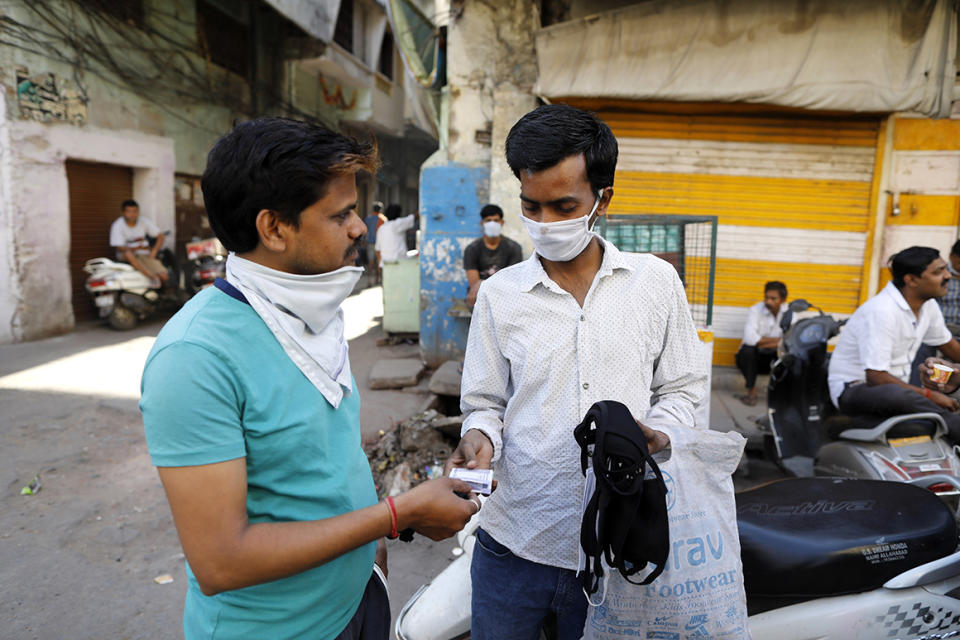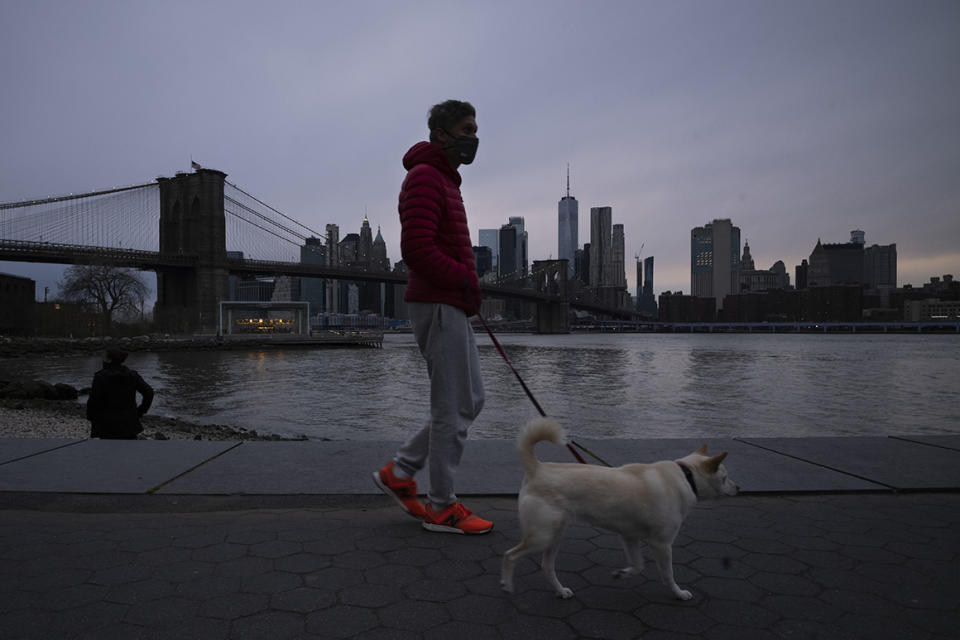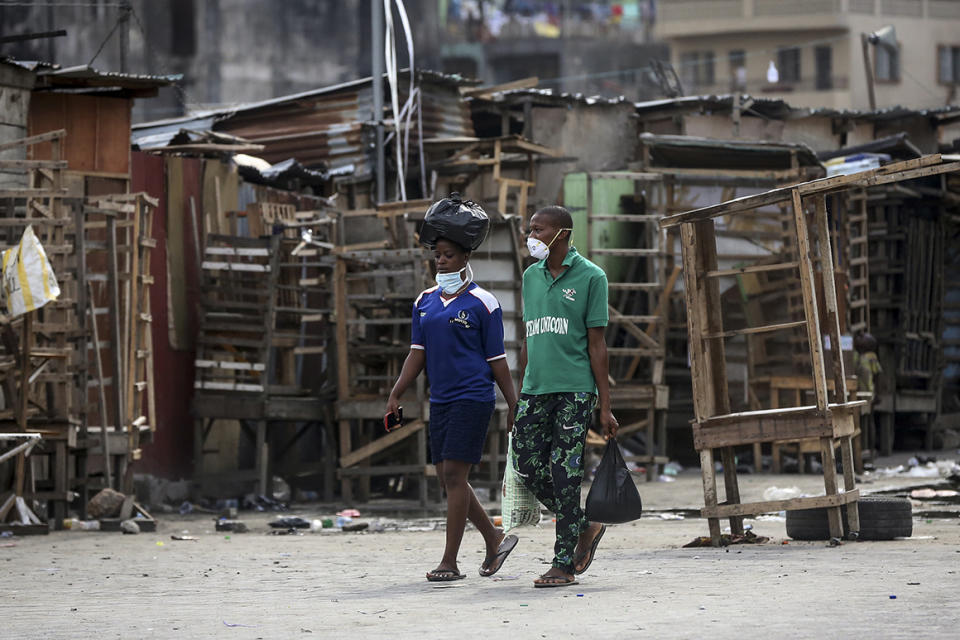How does the world end the coronavirus lockdown? Countries can't agree on exit strategy.
After weeks and, for some, months of social and economic isolation, political leaders and citizens around the world are eager to reemerge from their coronavirus-fueled lockdowns. The question is, how?
The answer has divided elected officials, health experts and international bodies. And unlike past global crises, the United States has declined to take the lead in coordinating the global response to the Covid-19 pandemic.
Threads of economic coordination are emerging at some levels of government. The European Union, for example, is planning a coordinated exit from its travel bans on non-EU residents. Some U.S. state governors, meanwhile, are forming regional alliances to work on coordinated economic reopenings. The G-20 has proposed a debt pause for developing countries. And European governments are in the midst of deciding how much they’re willing to pay to maintain the Eurozone currency framework.
But as countries from Spain to China to the United States move to partially reopen their economies, there are still no broadly agreed benchmarks for what constitutes safe conditions for returning to normal life. A number of countries, including Germany and India, plan to revisit their restrictions on May 3, which could mark a turning point around the globe.
Here is POLITICO’s global overview of what steps different countries and institutions are taking to enable economic reopening:
Europe
EU countries have shifted from complacent to haphazard in their approach to the virus. Several countries that ordered lockdowns in March are now tentatively relaxing some of their restrictions, despite warnings from the EU’s executive arm in Brussels that “any relaxation” will “unavoidably lead” to more Covid-19 infections, the disease caused by the unique coronavirus. The EU, however, has limited legal and political power to back up those warnings. Instead, it is focused on attempting to coordinate border controls.
On Wednesday, the European Commission recommended the bloc’s visa-free travel area remain closed to nonresidents for the foreseeable future. The commission was forced to drop a “roadmap” for ending lockdowns last week, after several national governments accused it of sending a dangerous signal to countries still urging millions of citizens to stay at home. The new plan instead calls for restrictions to remain in place until countries converge in flattening their Covid-19 curves. The EU’s current restrictive travel guidance applies until May 15.
Germany, Europe’s leading power, also laid out its plan for reopening its economy Wednesday. Chancellor Angela Merkel told a press conference that the government will allow stores smaller than 8,600 square feet (800 square meters) to reopen from April 20 under strict hygiene measures, and require Germans to keep 5 feet (1.5 meters) distance from others in public until at least May 3. Mask-wearing is not mandatory but recommended.
In parallel, Belgium's special committee of health experts, economists and regional and national politicians issued recommendations to keep the country's lockdown in place until May 3, with the exception of gardening and hardware stores.
Other European countries aren’t taking their cues from Merkel or the EU, however. The Czech Republic and Austria have already allowed some nonessential shops to reopen (while also mandating masks in public).
In hard-hit Spain, which after Italy has seen more deaths from the virus than any other European country, officials are allowing some in the industrial and construction sectors to head back to work, while encouraging them to walk or cycle there.
The Spanish government has called for more global coordination. But according to Pablo Casado, leader of Spain’s conservative opposition, the coordination problem starts at home. "Many employees return to work tomorrow, once again amid general confusion," Casado said Sunday.
Denmark is reopening some day care institutions and elementary schools this week, after a decision process Danish Prime Minister Mette Frederiksen described as “like walking a tightrope.”
The U.K. will almost certainly extend their lockdown on Thursday. France, meanwhile, plans to keep severe restrictions in place until May 11, after which “we want to let as many people return to work as possible,” President Emmanuel Macron said in a national address Monday. Critics complained his remarks lacked clarity.
Italy is also extending its strict lockdown, but has added some exceptions, allowing bookshops, children's clothing stores and forestry businesses to reopen. Ireland, Poland and Hungary remain in strict lockdown.
With reported Covid-19 deaths in Sweden now topping 1,000, the Swedish government is under increasing pressure to change its relatively relaxed approach.
Asia — Pacific

India has extended what is currently the world’s biggest lockdown through May 3, amid a rising infection curve. "From the economic angle, we have paid a big price," Modi said in a nationwide address. "But the lives of the people of India are far more valuable." Some restrictions on the poorest Indians will be lifted April 20.
Singapore avoided a lockdown for weeks after deeming it “unsustainable” for months at a time, according to government minister Lawrence Wong. The city-state of 6 million reversed course last week, closing schools and banning all gatherings — enforceable via jail time — after a new wave of infections. Japan has also tightened its approach, declaring a state of emergency in Tokyo, Yokohama and Osaka, the country’s three biggest cities.
Hong Kong is struggling to bring down the total number of active cases, despite operating with the benefit of what may have the most detailed infection datasets globally. After letting down its guard in mid-March, the territory imposed new travel bans and remains under lockdown.
Wuhan, China, the site of the original Covid-19 outbreak, reopened a week ago after 76 days of lockdown and Chinese tourist sites were busy over the weekend. But rising infections in Suifenhe on the China-Russia border have prompted a lockdown in the city.
Other countries doing well in the region include New Zealand and Australia, which are maintaining their tough restrictions.
The Americas

The U.S has two federal task forces looking at the health and economic impacts of the pandemic, but lacks a single national plan for testing or reopening the economy (although President Donald Trump on Monday declared his authority in this regard to be “total”).
The country's most populous state, California, will condition its gradual reopening on a series of public health benchmarks and the preparedness of schools and businesses, Gov. Gavin Newsom said Tuesday. New York is creating its own coronavirus test, with plans to manufacture up to 50,000 tests per week, after making widespread testing availability a precondition of its reopening. The state will also coordinate with New Jersey, Connecticut, Delaware, Pennsylvania and Rhode Island on how to ease social and economic restrictions.
The busy U.S. borders with both Mexico and Canada remain closed to nonessential travel.
Canadian Prime Minister Justin Trudeau admitted Monday that Canada’s shutdown of nonessential businesses, which has led to a 25 percent unemployment rate, will remain in place for several weeks. Trudeau said the economic reopening will occur in phases.
Canada’s Parliament is operating in a skeleton form — a representative sample of just 32 members — and the country is maintaining restrictions on international arrivals and interprovince travel. Mayors of major cities like Montreal have, however, pivoted from talk of mass quarantine to economic relaunch plans.
Further south, Argentina’s borders have been closed since March 15 and nonresident foreigners remain banned from Brazil until April 30.
Africa and Middle East

African governments took early preventative action: most stopped international flights beginning in mid-March and restricted gatherings before their countries experienced a Covid-19 death.
Those moves haven't received unanimous support, however. South Africa’s lockdown, which the government extended until the end of April, is under challenge from opposition parties.
Nigeria, Africa’s most populous country, has imposed a lockdown in three key states — Lagos, Abuja and Ogun — until at least April 27, and suspended rail services.
In the Middle East, social distancing restrictions are mostly tight and tightening.
The exception is Iran, which reports the region’s worst outbreak with 3,600 reported deaths and 73,000 infections. Despite that, intraprovince travel restrictions were lifted this week.
In contrast, Turkey — which responded slowly and now has more than 65,000 cases and 1,400 deaths — is increasing restrictions, including weekend curfews in 31 cities.
Many Middle East countries have reported very low death tolls, but there are questions about the methods used to obtain those numbers. The United Arab Emirates has recorded just 28 deaths among nearly 5,000 cases, while Qatar recorded just seven deaths among 3,428 cases.
One reason for the relatively small death count is the early action countries took, including around 650,000 tests in a population of less than 10 million, schools closings and a nightly curfew. Other possible factors include a lack of testing among Indian immigrant workers and mass deportations of other groups, including Ethiopians sent packing from UAE and Saudi Arabia.
After shutting down March 25, Dubai-based Emirates airlines has announced limited new service, while Qatar Airways is still operating around 150 flights a day.
Israel is locking down hot spots, restricting the workforce to 15 percent of prepandemic levels, and encouraging citizens to wear masks. Tight restrictions will remain until new cases fall to around 10 per day, according to a National Security Council document reported by the country’s public broadcaster.

